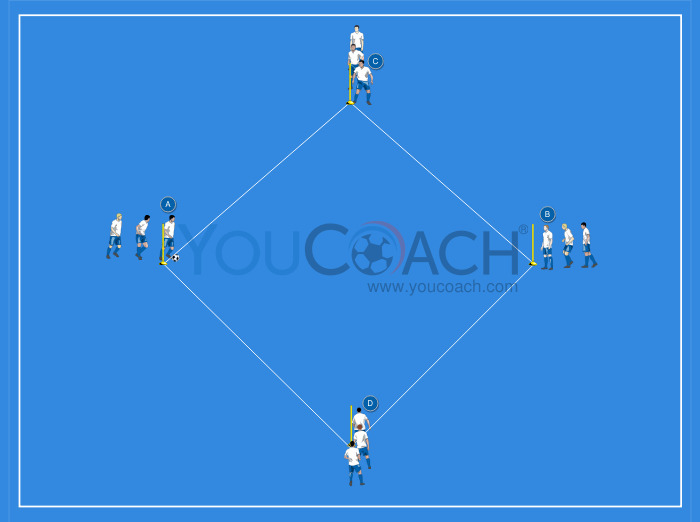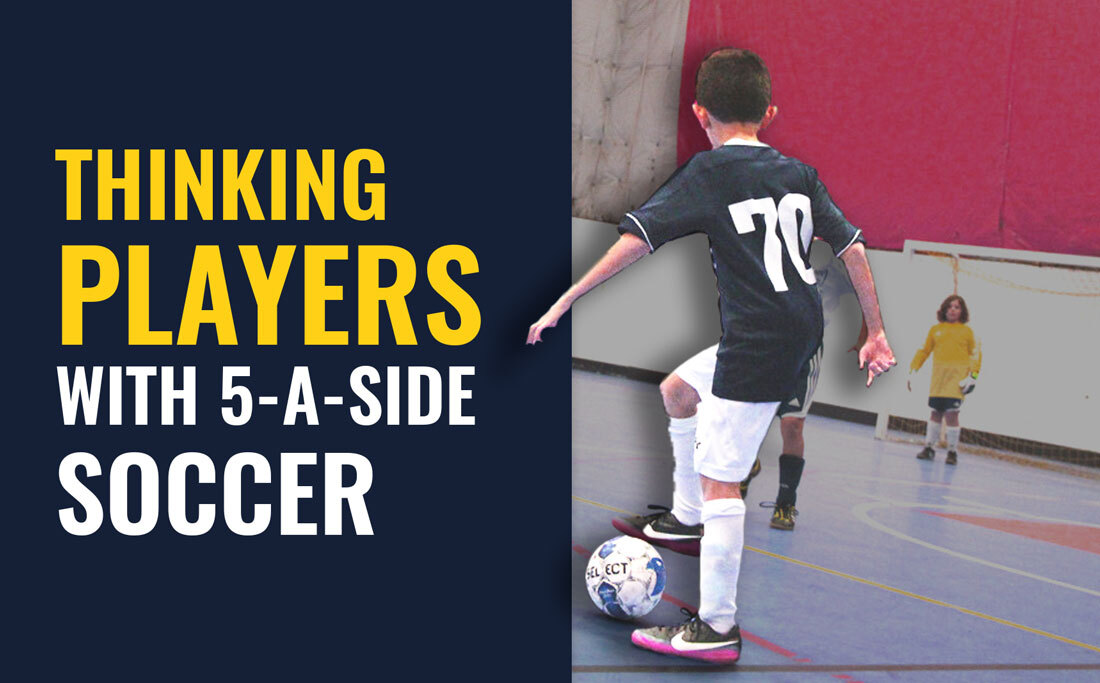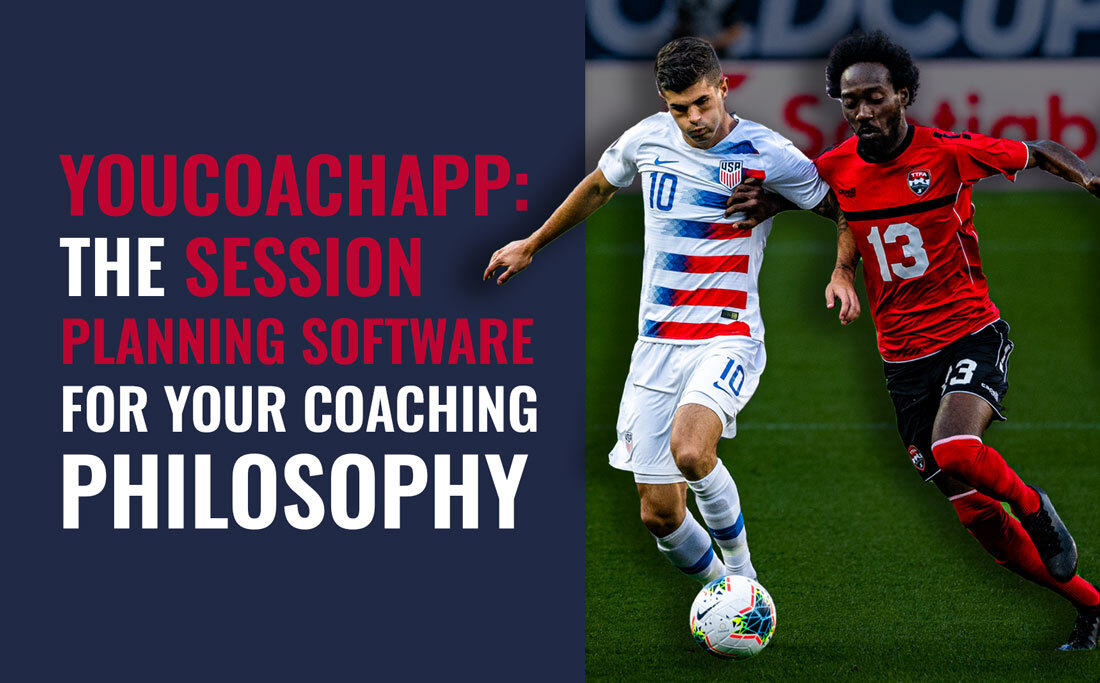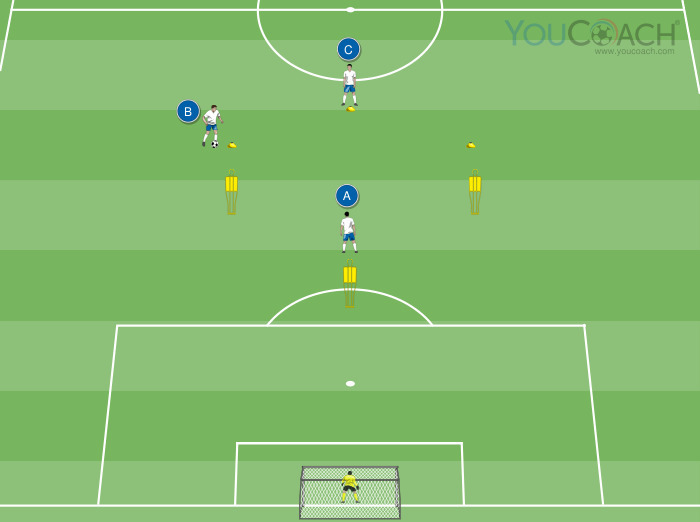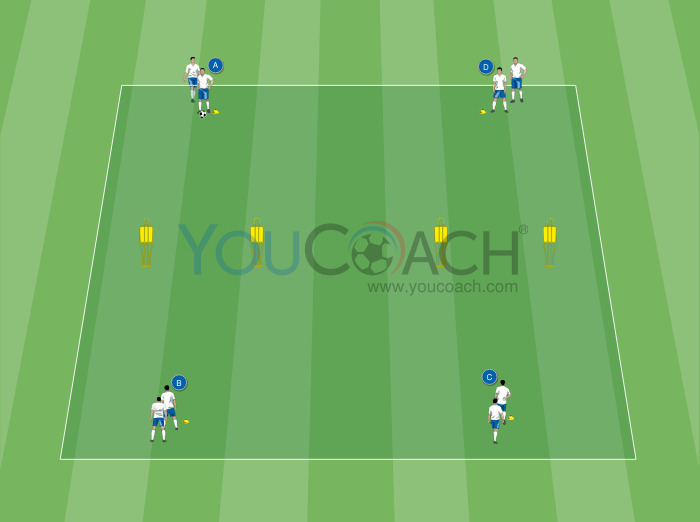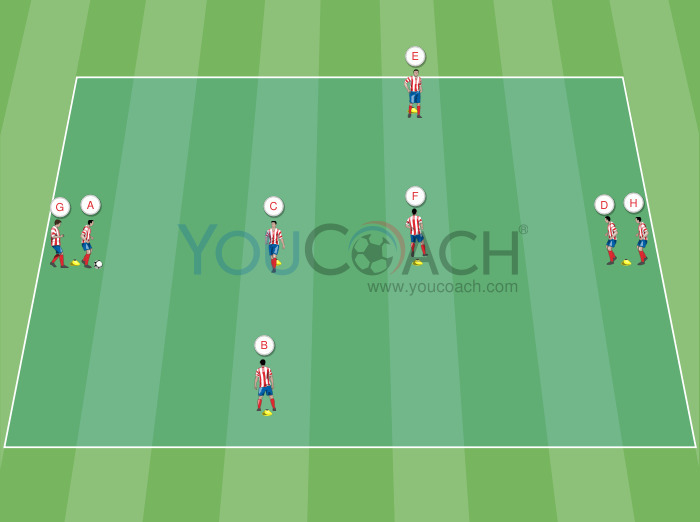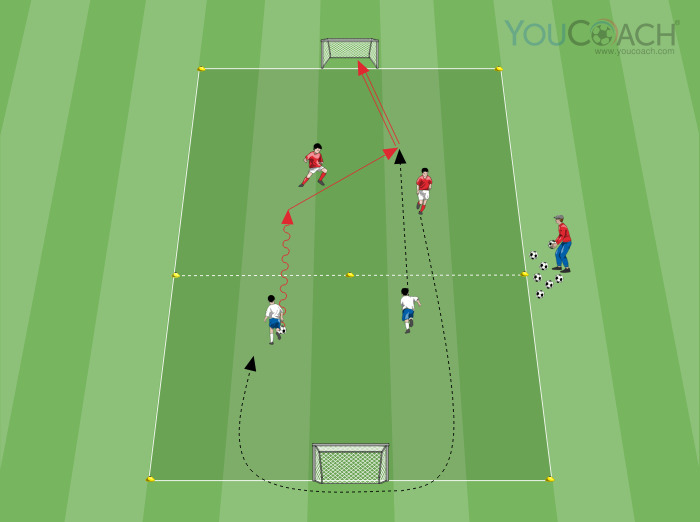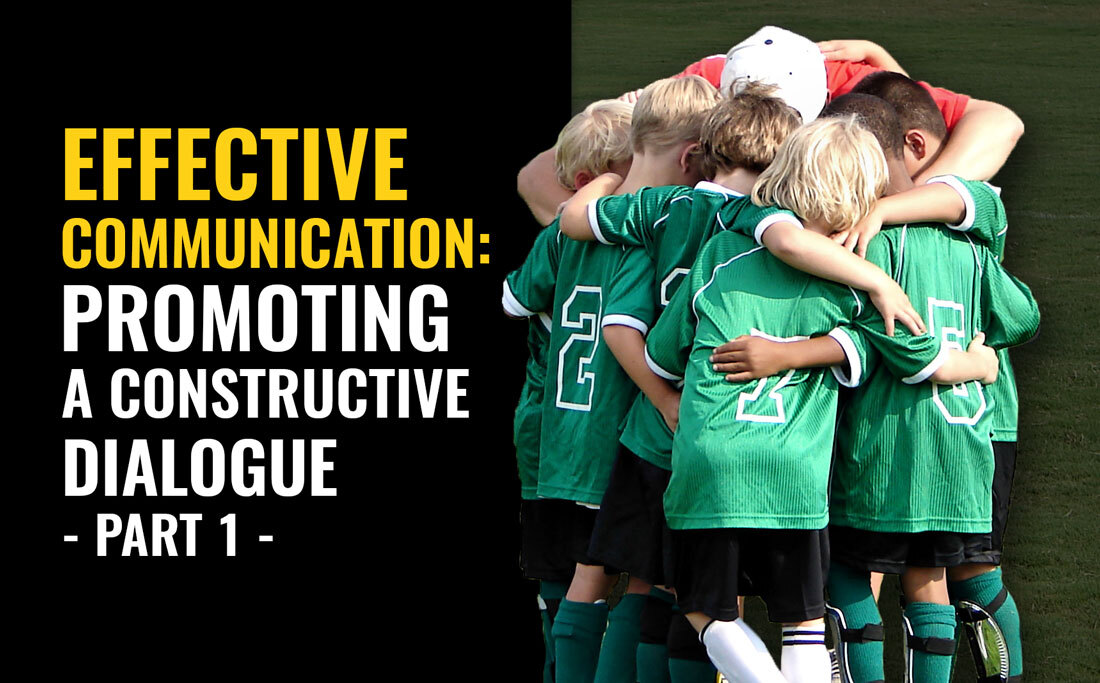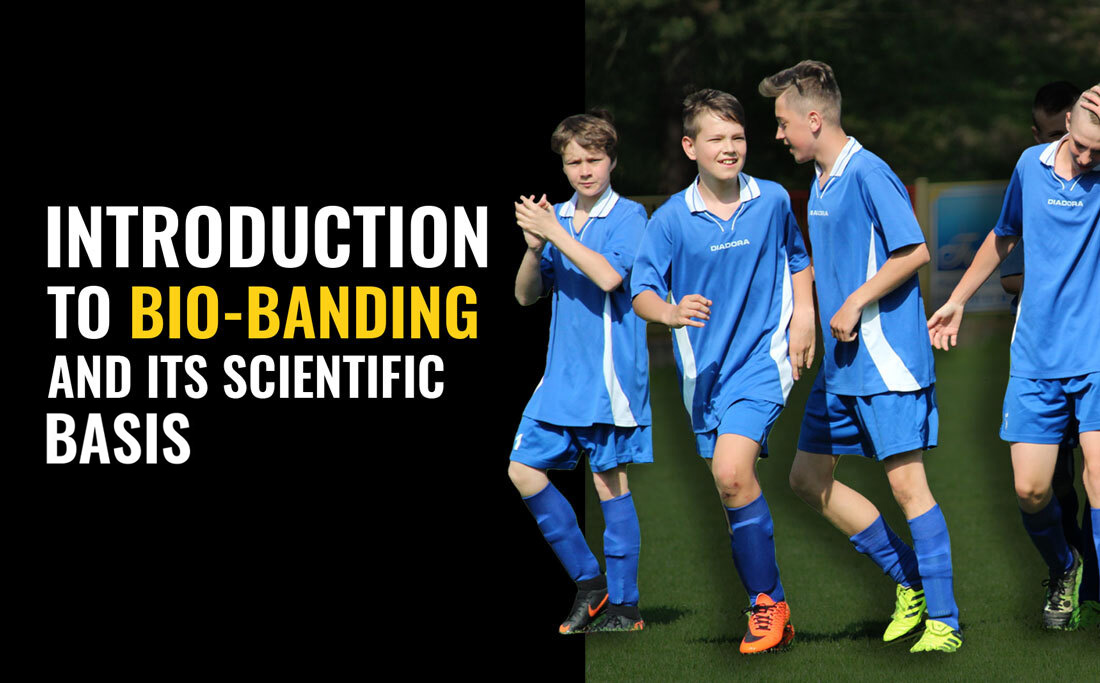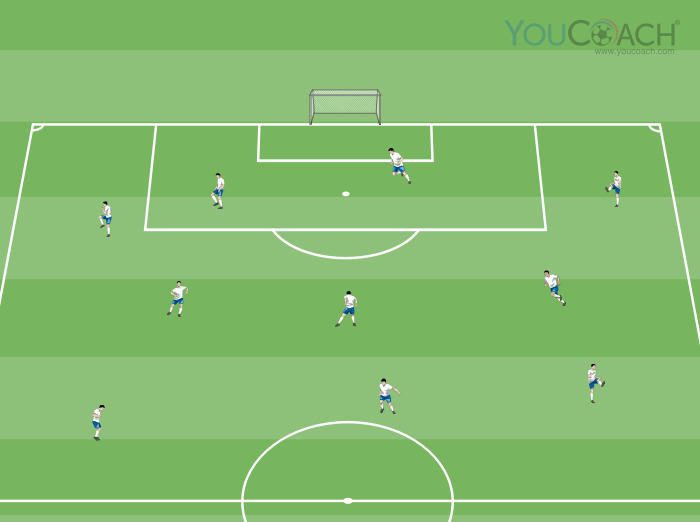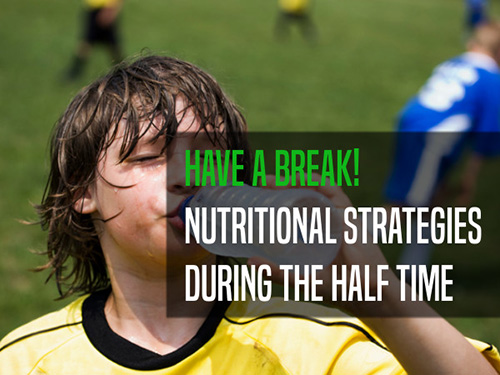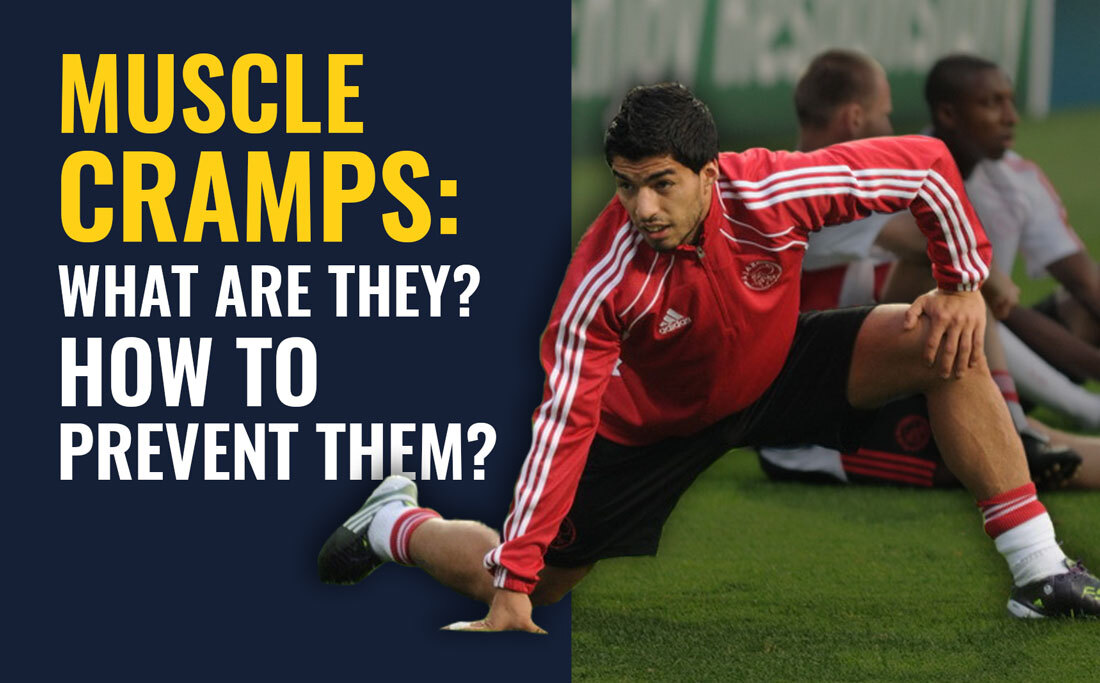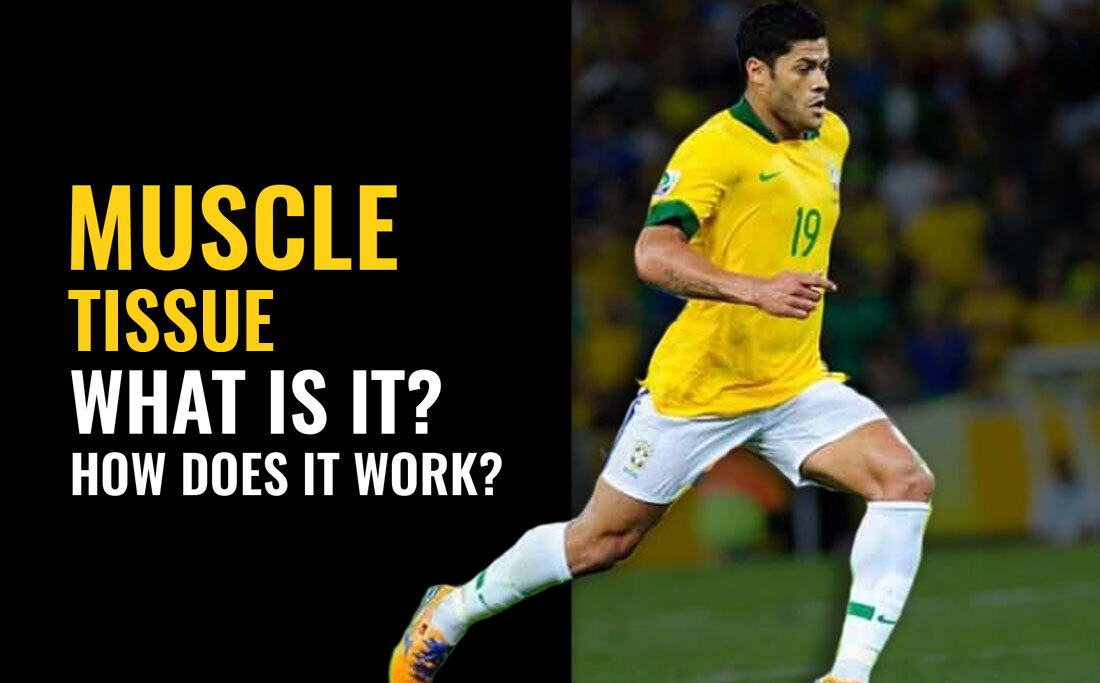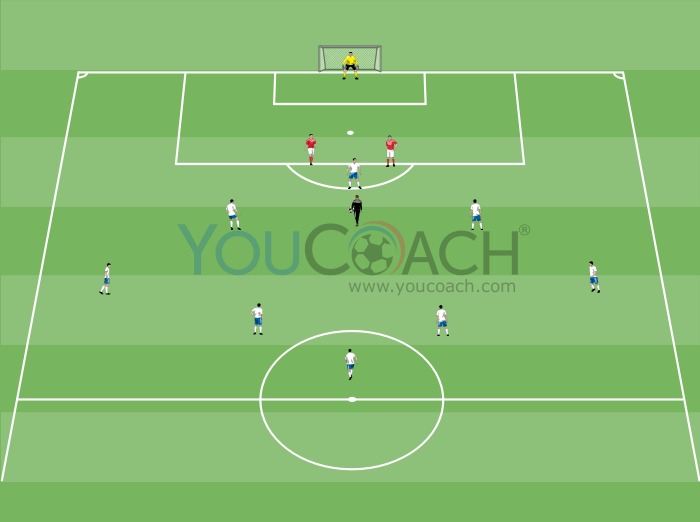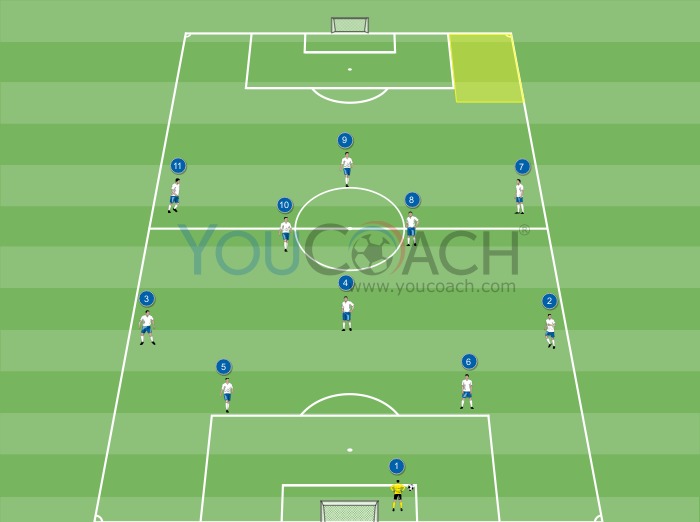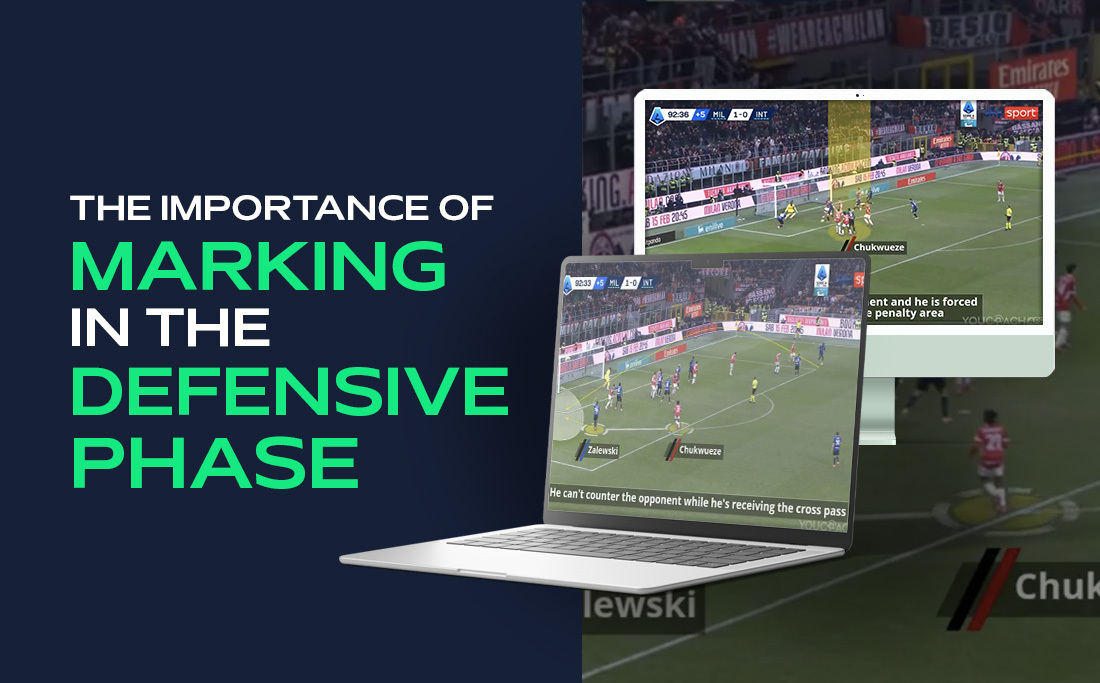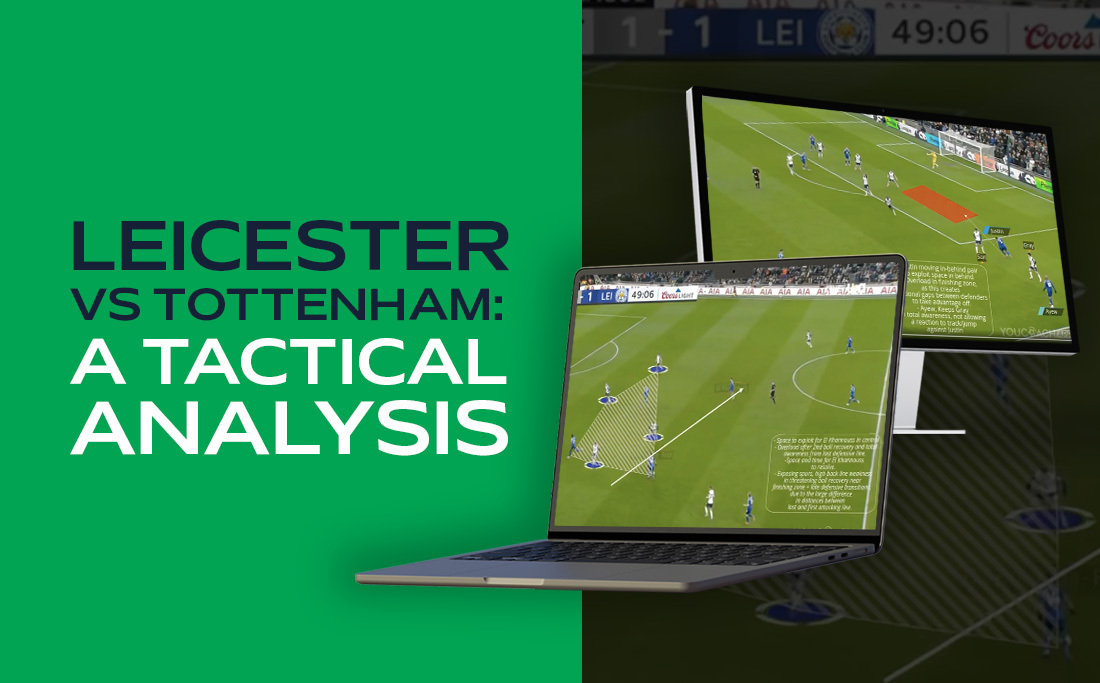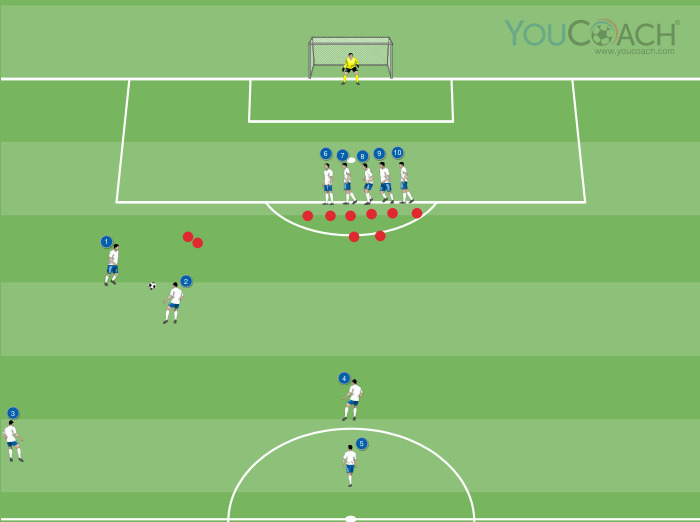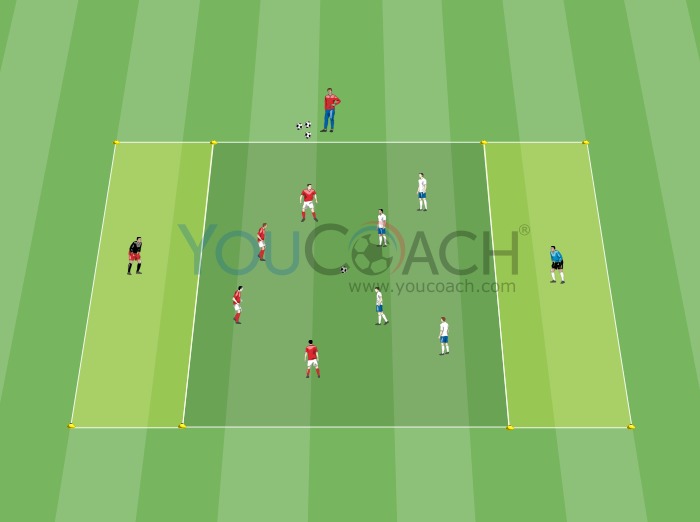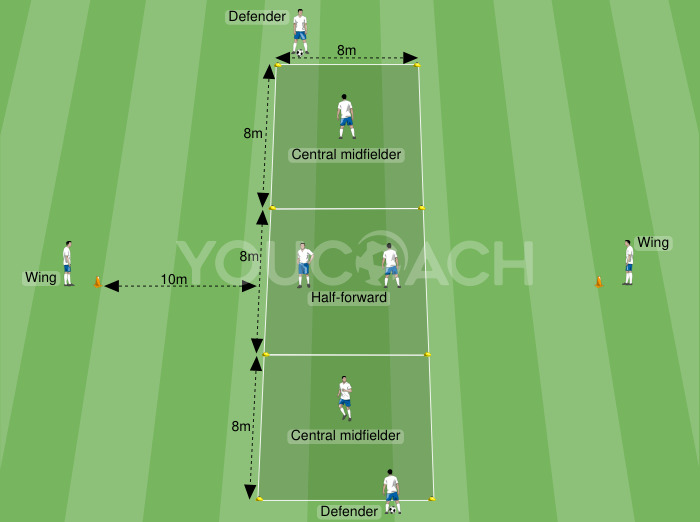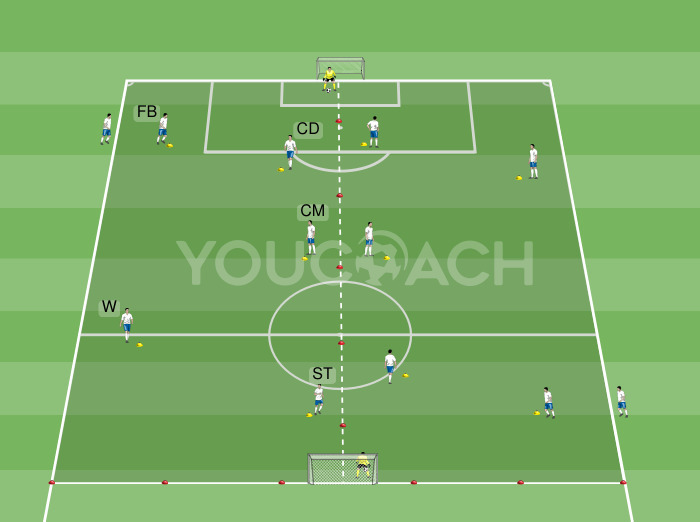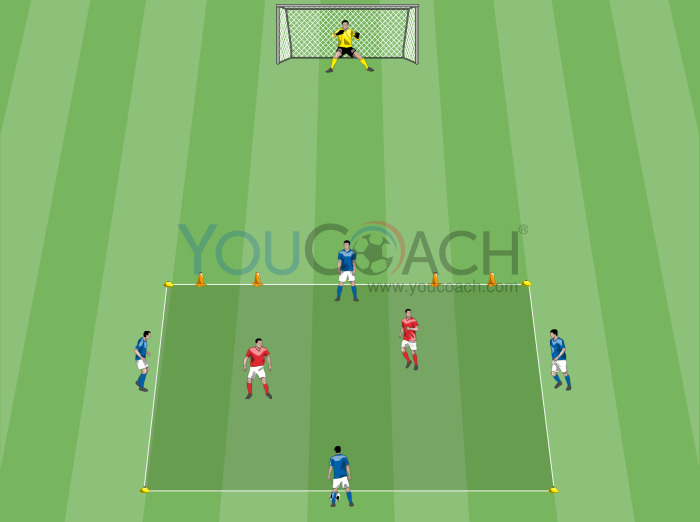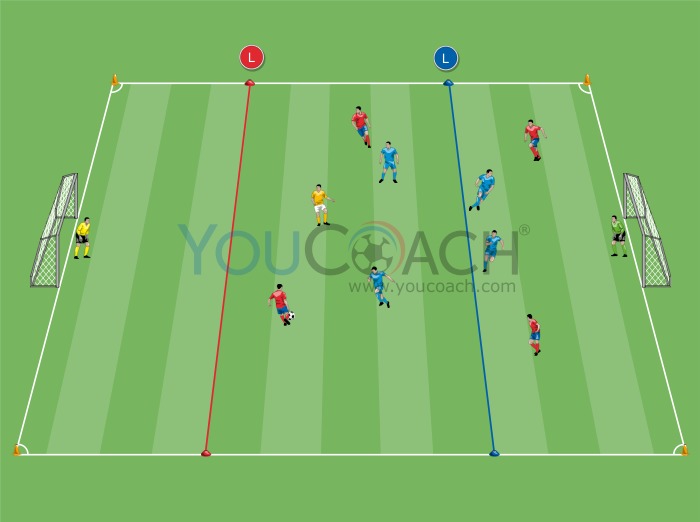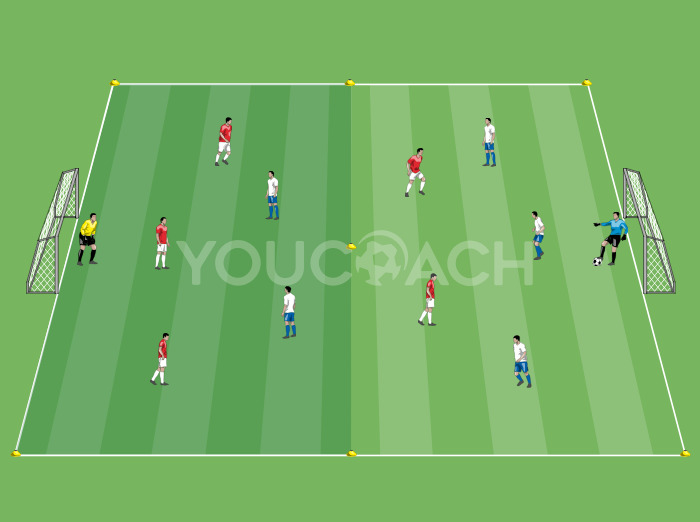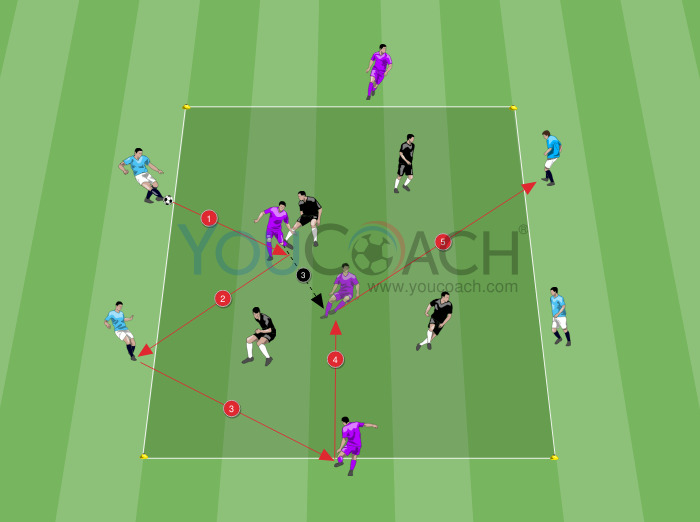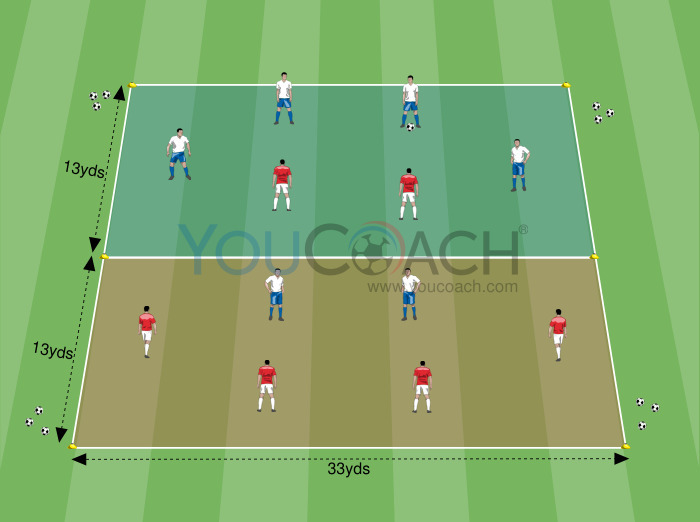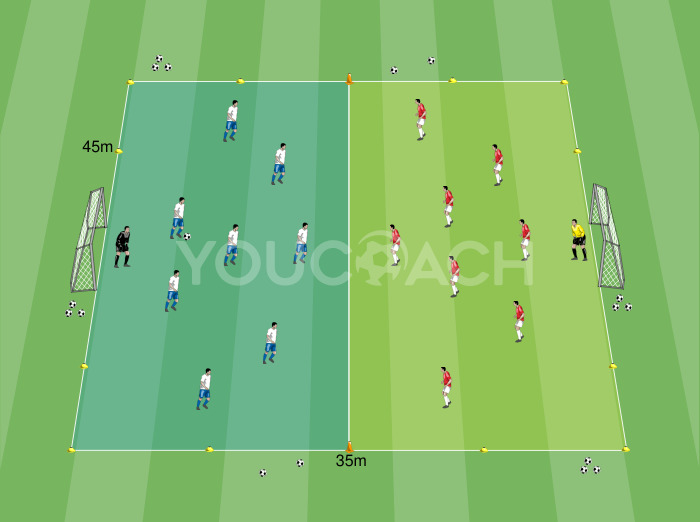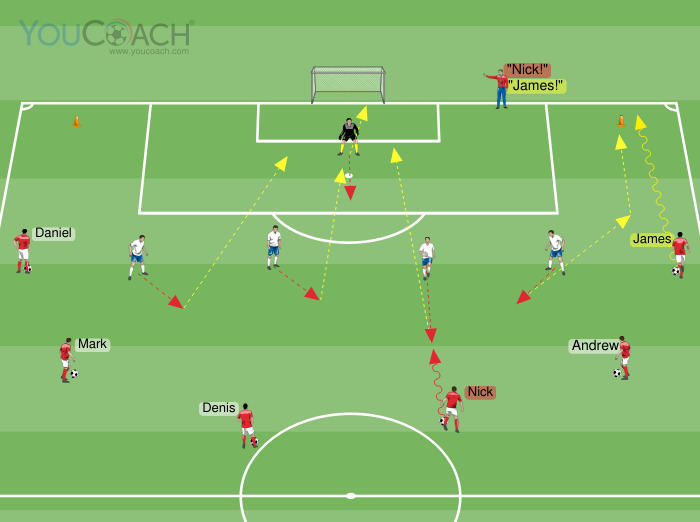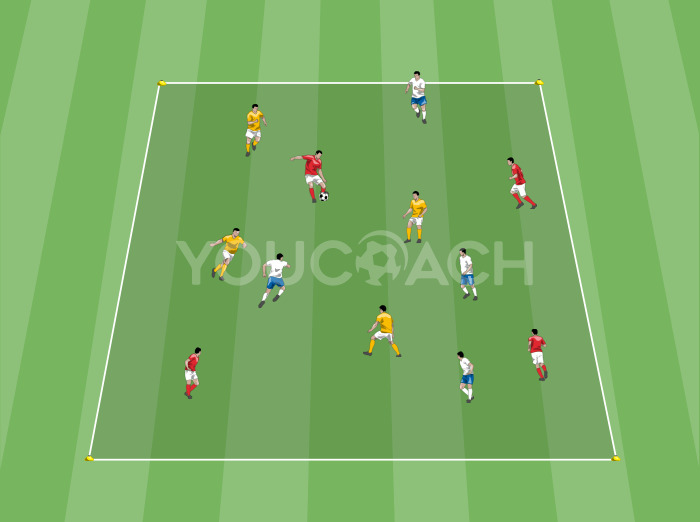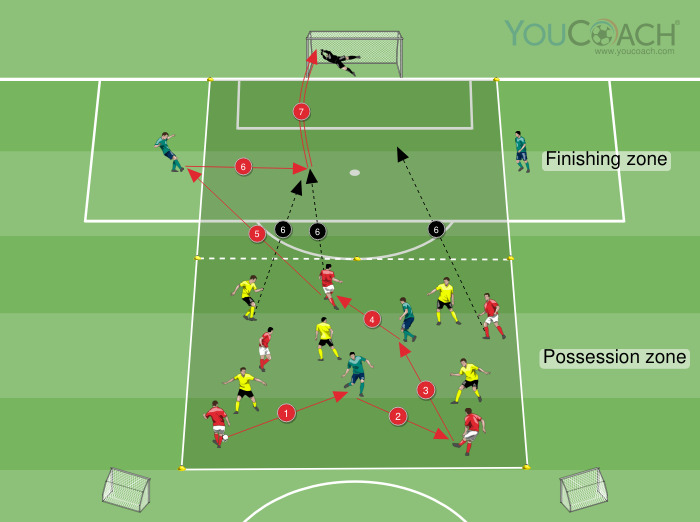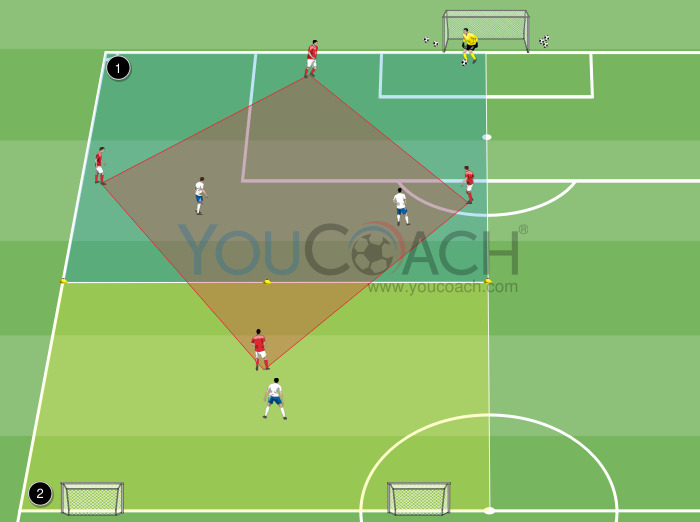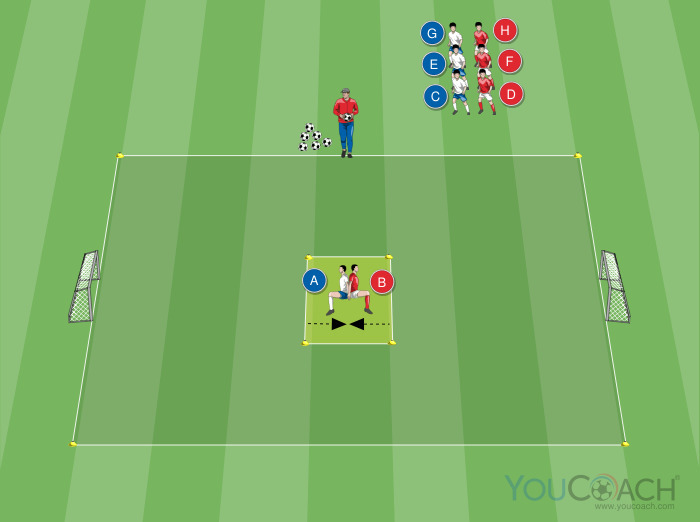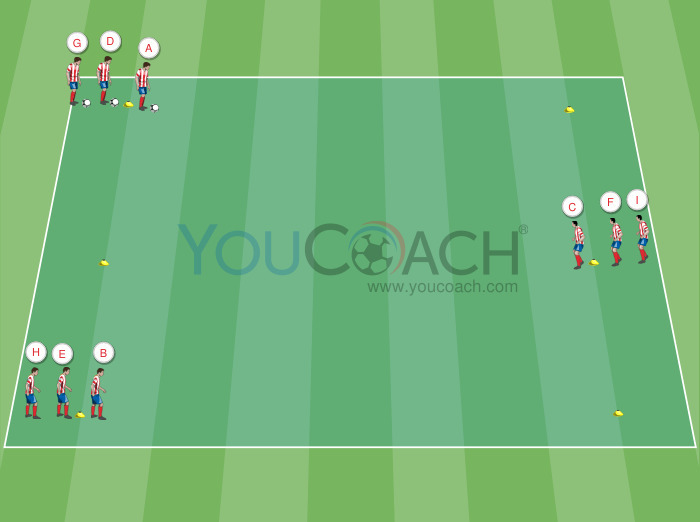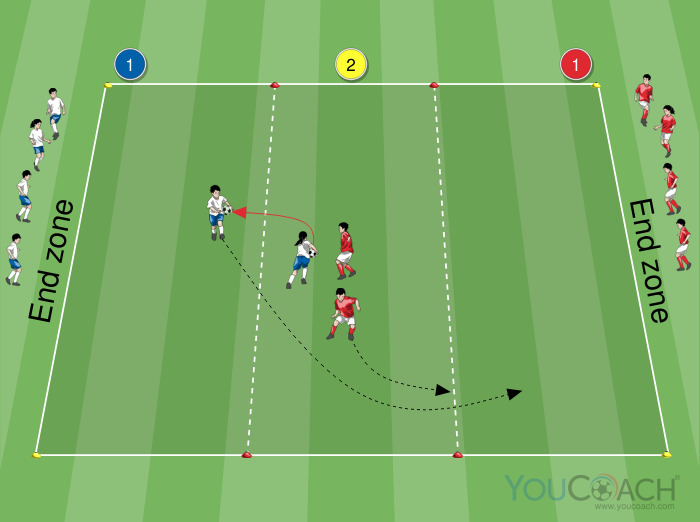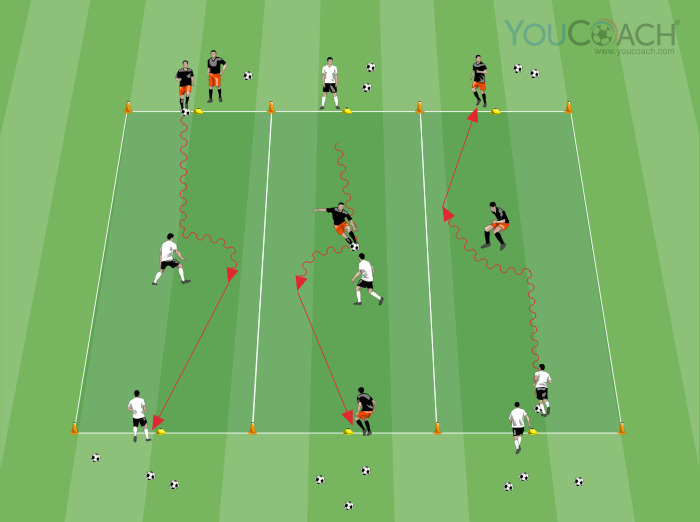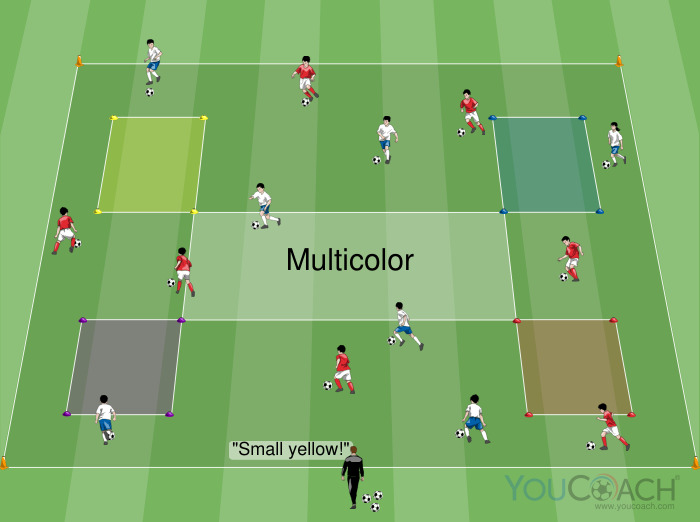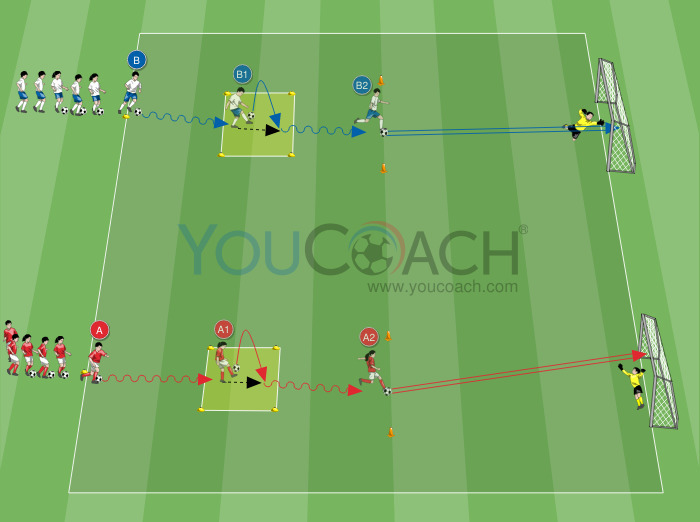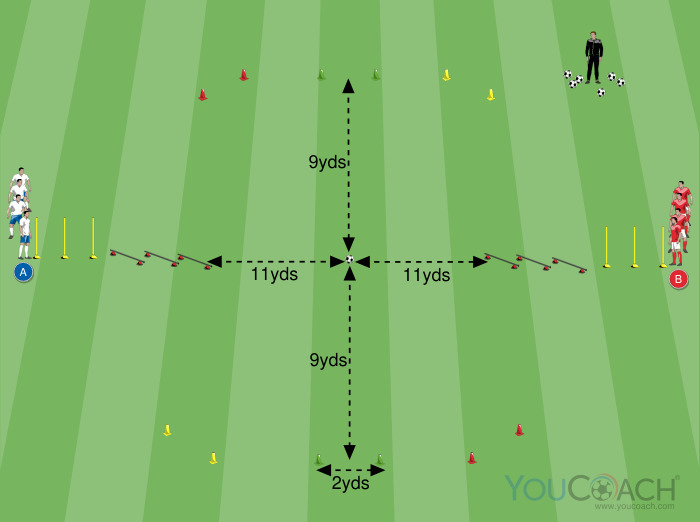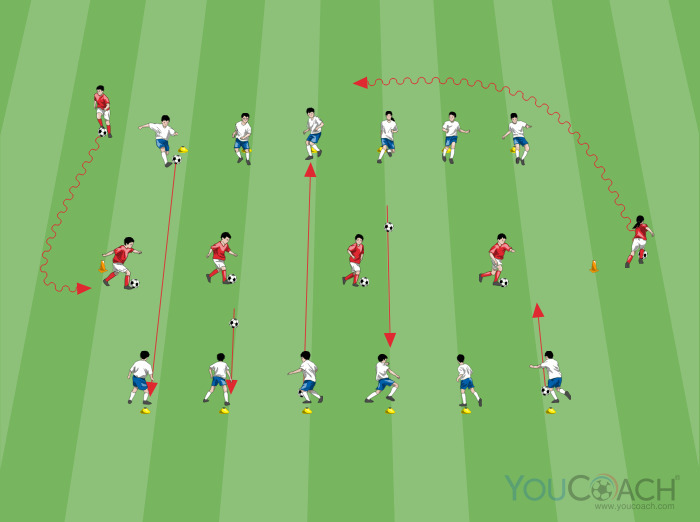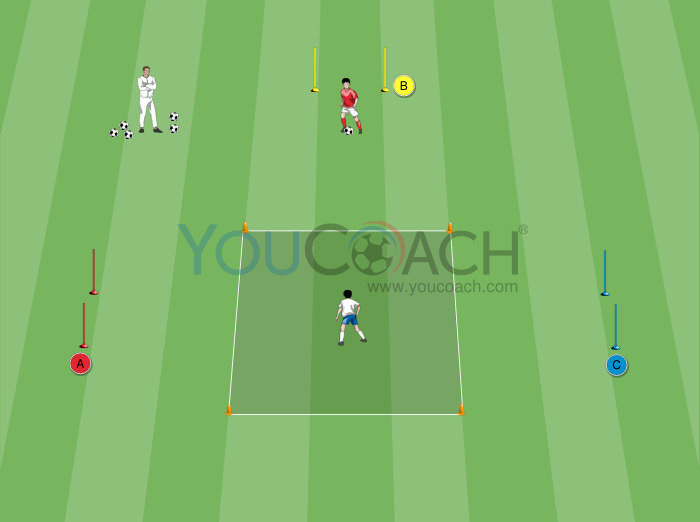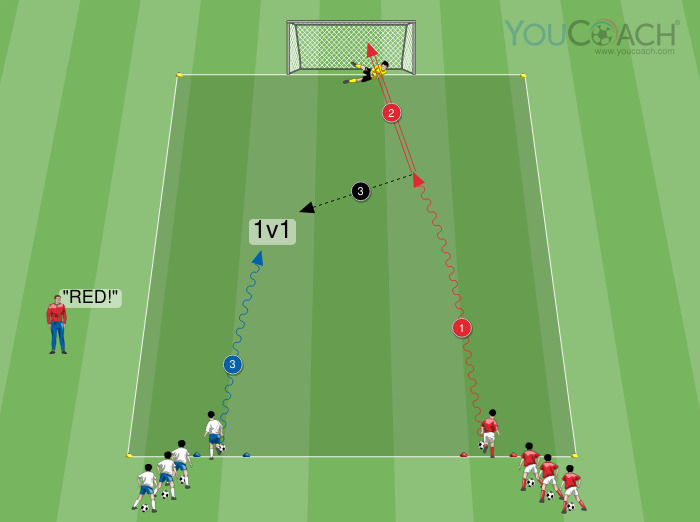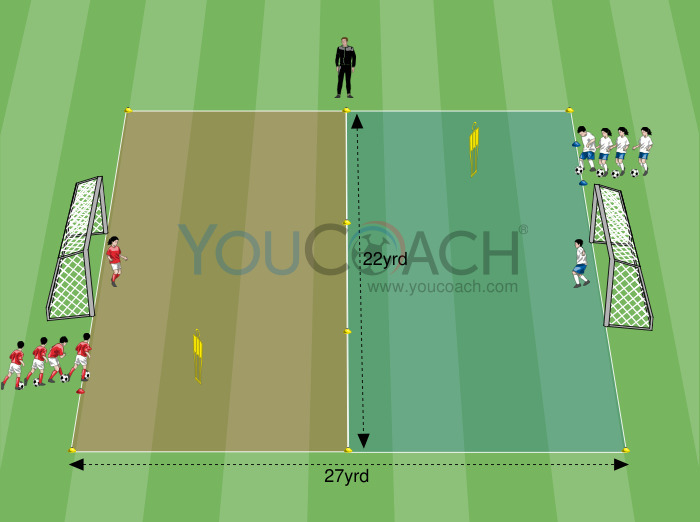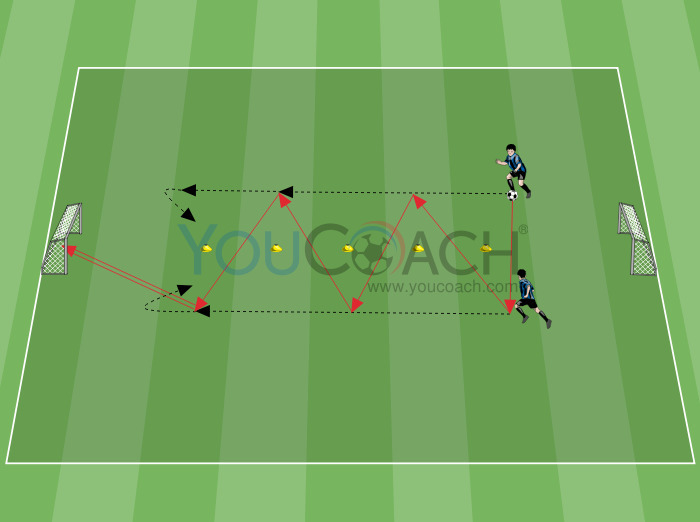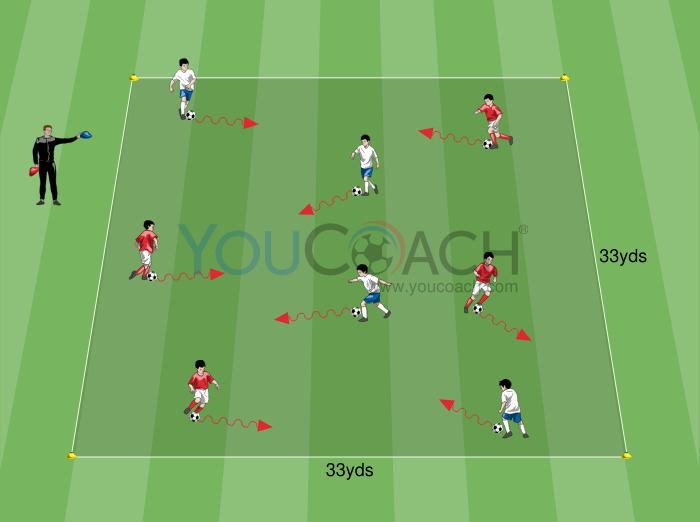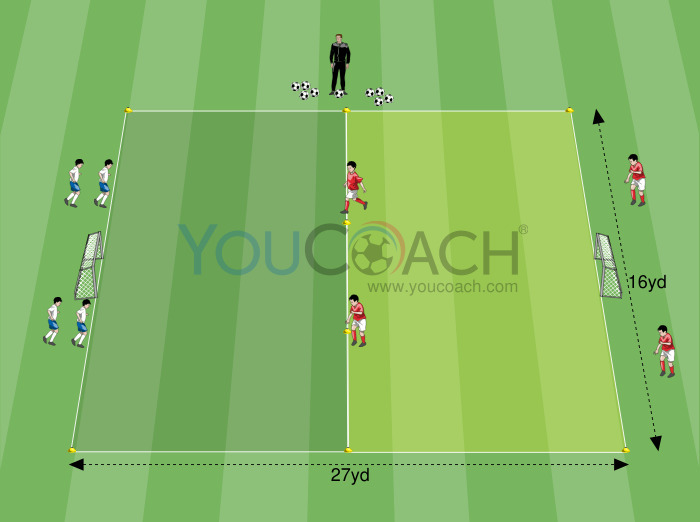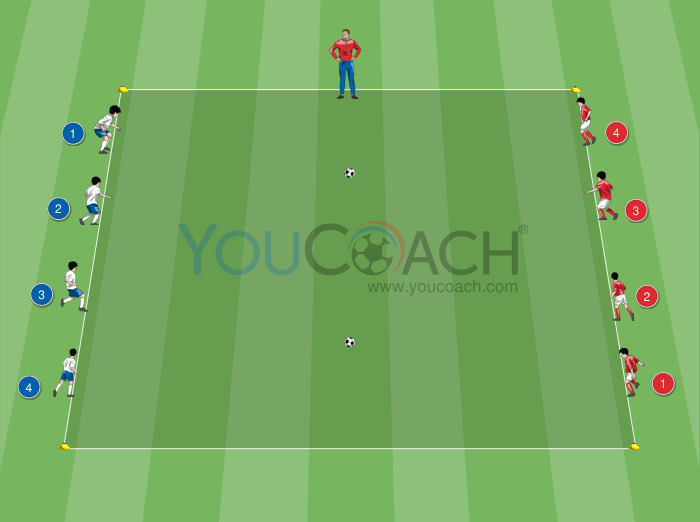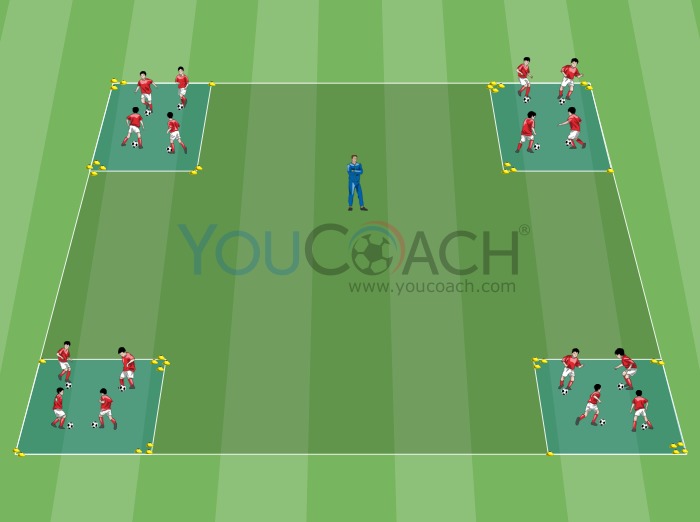Thematic match: 6 versus 6, 1 goal can count for 2
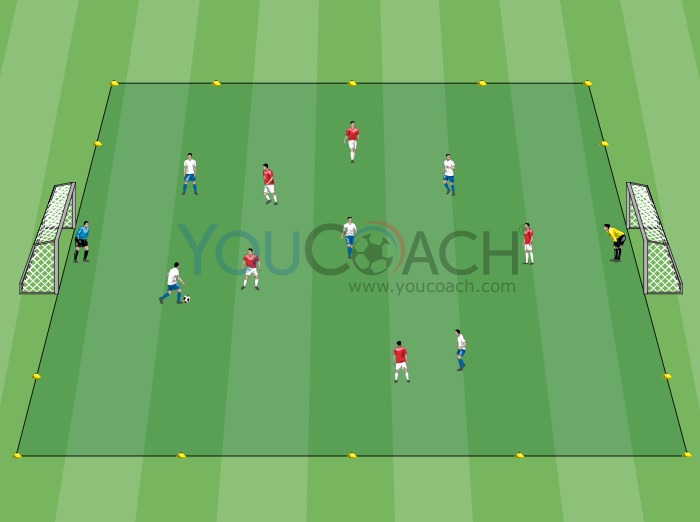
- Markers
- 2 regolatory goals
- 5 vests (red in illustration)
- Balls
- Playing area: 30 x 40 yards
- Number of players: from 12 (10 players + 2 goal keepers)
- Duration: 22 minutes
- Number of series: 2 halves 10 minutes each (1 minute of passive recovery after each series)
| Summary | Secondary Objectives |
|---|---|
|
Thematic match 6 vs 6 training technical and tactical aspects |
Creating space, Transition, Finishing in the final third, Mark, Passing, Receiving, Shooting, Body shape, First touch, Losing your marker, Pass, Finishing, Positioning, Marking, Goal defense, Mobility, Ball possession, Attack the goal, Transitions |
Arrange, with markers, a playing area 40 yards length x 30 yards width. Place a regolatory goal in the centre of each short side of the playing area. Inside the pitch, 5 players (in red) versus 5 players (in white). The 2 goal keepers defend their goals. Keep a good number of balls close to the goals, ready to be played.
- When the coach whistles, a match 6 versus 6 starts.
- Target of the team in ball possession is to score goals.
- If the team in ball possession shots on goal after 5 consecutive passes (without interception by opponents), the goal counts for 2.
- No restriction of ball touches.

- You can limit the ball touches, depending on players ability.
- Limit the ball touches to only one touch
- Force the players to pass the ball using the same foot they controlled the ball with (or make them play with the 'weak' foot...or only with the 'strong one')
- Add an 'all-rounder' who will always play with the team in ball possession (numerical superiority)
- With variations 2 and 3 players are forced to position themselves to see the pitch at best. Controlling the ball with further foot, besides, force the opponent to run more to intercept it.
- Creation of ball possession triangles, useful to avoid opponent pressing, putting him inside those triangles
- Take care of the reaction to negative transition: once one loses the ball, the players closest to the ball attacks his opponent, while his mates get closer to their respective opponents
- Take care of distances between players
- Focus on body orientation while players receive the ball: it has to be opened towards the widest portion of the pitch
- Encourage the players to pass the ball and run, to try and insert themselves in free spaces, where they can get the ball back (continuous mobility)
- Encourage the players to get away from their markers through counter-movements
- Body-stance is an individual (tactical) behaviour that has to do with cognitive capabilities, time & space evaluation, motoric anticipation
- Body-stance deals with our own goal do be defend, with our opponent (or with more than one opponent) and with the zone of the pitch we are in, obstructing an offensive play by our oppnents


